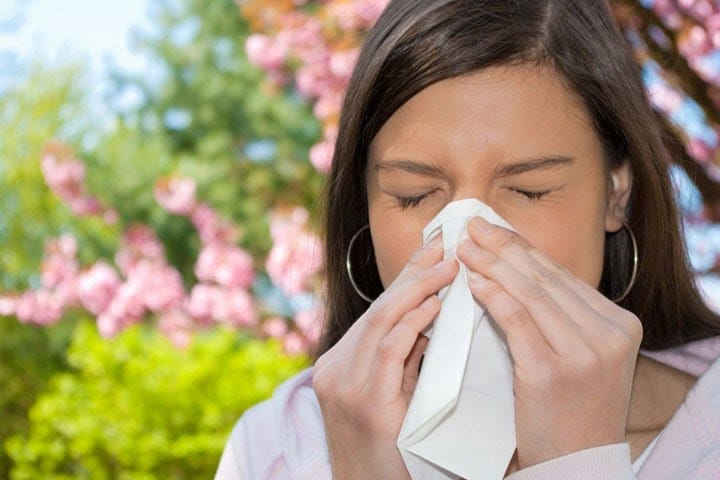
Seafood Allergy: Causes, Symptoms, Treatment
Nowadays, more and more people prefer seafood to meat because it is rich in omega-3 fatty acids, useful nutrients, and protein. However, despite its exceptional health benefit, it may trigger an allergic reaction in people.
Over 7 million Americans suffer from this problem, they are either seafood allergic or seafood intolerant, the most common allergens are fish and shellfish. Nevertheless, it is worth mentioning that being allergic to seafood doesn’t mean that all its types are unsafe for you, you may be allergic to certain varieties. Thus, people, who don’t consume crustaceans or mollusks can eat cartilaginous fish and vice versa.
In this article, you’ll learn and discover what a seafood allergy is and the causes, symptoms, and treatments you can use.
Table of Contents
What Are the Allergens?
Basically, muscle protein tropomyosin is responsible for the allergic reaction, crustaceans (shrimp, crayfish, lobster, crab) and mollusks (scallops, octopus, oysters, snails, clams, squid) contain it. Also, parvalbumin, which is found in fish, also may trigger the allergy. On top of that, another allergen is arginine kinase, it is found in tiger shrimp and white shrimp.
So, when the body identifies one of these allergens, it releases histamine and other chemicals to fight the alien. Eventually, mild or even life-threatening symptoms develop.
Many people also wonder if fish oil supplements are a health hazard. These supplements undergo many levels of purification, which remove protein, so usually, they are safe. However, it is recommended to go for other supplements, which give necessary fatty acids or rule out reactions to fish oil supplements.
Besides, there is a misconception that stopallergyguide.com/iodine-allergy the seafood allergy and Iodine – the element, which is paramount for the production of thyroid hormones and amino acids, are related. But, it has been scientifically proved that the Iodine is not an allergen.
How Do Allergens Get into the Body?
Mainly, the allergen is ingested through food, but some people may experience symptoms even without eating the seafood. It happens through cooking vapors and dishes, which have been used for the preparation of seafood.
On top of that, some people may face cross-contamination. Normally, it is a transfer of the allergen to products, which shouldn’t contain it. Usually, it happens in several cases:
- During the manufacturing (production and packaging equipment).
- At retail (shared tools).
- During the preparation (the same cutlery, hands).
So, each person with a seafood allergy should be very careful about what he eats and where he consumes food so that not to suffer from allergy symptoms.
Seafood Allergy Symptoms
An adult-onset seafood allergy doesn’t lead to serious consequences, signs range from mild to severe, but sometimes they can cause the anaphylactic shock, so it is better to keep your medication handy. Symptoms manifest themselves between two and six hours.
Moderate signs encompass:
- Skin rash;
- Swelling of the lips, tongue, throat as well as other body parts;
- Nausea and vomiting;
- Itching;
- Watery eyes.
Severe signs at the outset may be similar to mild, but they rapidly progress and can cause anaphylactic shock. They presuppose:
- Shortness of breath;
- Tight throat and problems with swallowing;
- Wheezing;
- A cough;
- Weak pulse and low blood pressure;
- Loss of consciousness.
How to Manage a Seafood Allergy?
The allergy management includes both medical treatment and preventive measures.
The treatment depends on the severity of symptoms. Thus, mild signs ease over a few hours or days. But if symptoms are troublesome and severe, doctors prescribe a standard scheme of the allergy treatment, which consists of three steps:
- Elimination therapy is aimed at the removing histamine from the body. For this, the patient eliminates allergens from the diet and doesn’t visit those places, where the seafood is prepared.
- Drug therapy means the elimination of symptoms or decrease of their severity. People take antihistamines and Sorbents. If the skin reaction is severe, the use of glucocorticosteroids is recommended. As for the severe symptoms, they threaten the health, so a person requires the epinephrine injection.
- Specific immunotherapy is appointed when the drug treatment has not brought results. Immunotherapy means an injection of the allergen under the skin so that the organism could cope with it. Thus, resistance to the allergen is produced.
If you are allergic to the seafood, always take preventive measures, for this, stick to the tips:
- Undergo skin and blood tests to find out the allergens.
- Do not eat seafood and other products, which may contain it (sauces, Asian food, chips).
- Always read labels as there are many foods, which contain allergens. Avoid packages without proper labeling.
- Cross-contamination often happens at a restaurant, so be cautious while eating out. Make sure that there is no fish sauce in your meal and that the staff doesn’t use the same oil and utensils for the preparation of seafood and other products. Also, stay away from cooking areas.
- An allergic reaction is tricky and may occur at any time, so except having your remedies on hand, wear an alert bracelet and let know your family, friends, and coworkers that you are allergic to seafood.
- Sometimes it happens, when nobody can make you an injection of adrenaline, so learn how to do it yourself, it can save your life.
Conclusion
Thereby, a seafood allergy won’t be an obtrusive problem if you watch what you eat, timely undergo a medical examination and take medications. All these measures will help to reduce the allergy symptoms or completely eradicate them.






